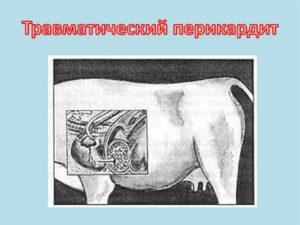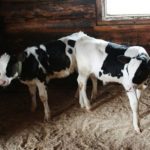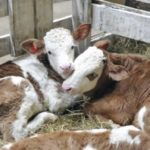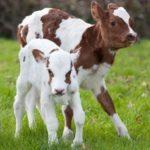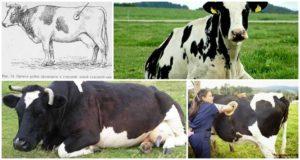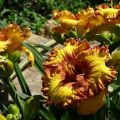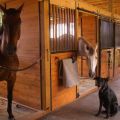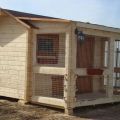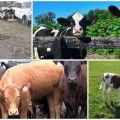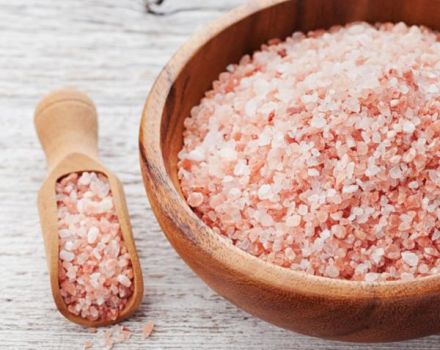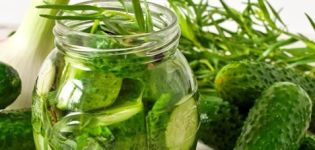Why do calves gnaw boards and what they lack, prevention
Calves often take all of their mouths or bite objects after weaning from colostrum. This problem is caused by a vitamin deficiency in pups and the occurrence of hypovitaminosis. At the same time, kids can gnaw a tree, eat earth, and tear paper. To cope with the problem, it is important to establish why the calves are chewing the boards. In some situations, this requires the help of a veterinarian.
Why and what to do if calves gnaw boards
There are many reasons for calves to chew on boards or other wooden objects.
Ketosis
This term is understood as a pathology that appears due to a violation of metabolic processes. The provoking factors of its development are considered to be an unbalanced diet, a deficiency of carbohydrates, and the processing of excess fat by the liver.
In addition, the lack of walks in the fresh air is considered the cause of the development of pathology. If you do not take action in time, there is a risk of the process becoming chronic. In this case, ketone bodies accumulate in the body of the calf, which provoke damage to the internal organs. In this case, the heart, liver, and glands may suffer.
Osteodystrophy
If the calf chews on boards or licks walls, osteodystrophy may be suspected. This pathology is characterized by a lack of vitamin D, phosphorus and calcium. Also, the reason is the violation of the proportions of these compounds. Deterioration of the functions of absorption in the digestive system can be caused by improper diet or inflammation of the mucous membranes. As a result, metabolism is disrupted and hypocalcemia develops.
Deficiency of vitamin D in the calf's body and impaired metabolism of calcium and phosphorus provoke noticeable problems in the process of bone formation. Also, the calf may have rickets. When the first symptoms of problems appear, it is recommended to give the calves vitamin and mineral complexes. They must contain phosphorus, calcium and vitamin D.
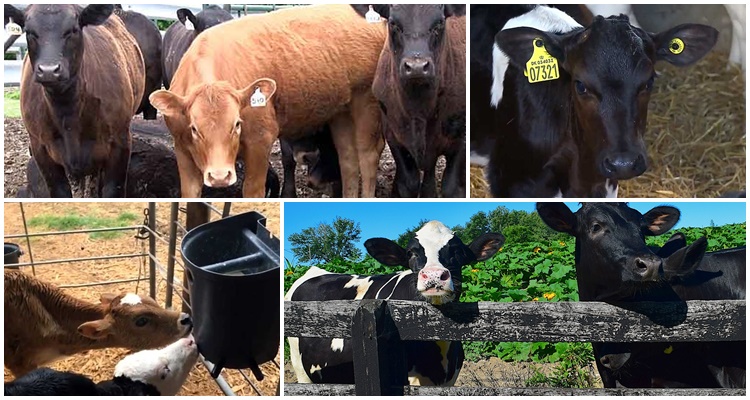
Hypocuprosis
This pathology prevails in regions with peat-boggy soil types, which contain little copper. The lack of this element occurs when its content in the ground is less than 15 milligrams per 1 kilogram, and in feed - up to 5 milligrams per 1 kilogram.
In calves, pathology can develop against the background of prolonged drinking of milk or its substitutes.Lack or excess of a certain element in the feed provokes a chain reaction. Deficiency of cobalt or iron leads to hypocuprosis. Also, excessive amounts of calcium and lead become the cause of problems. The same applies to inorganic sulfates, sulfur, molybdenum.
Common symptoms of the disease include the following:
- developmental delay;
- a sharp drop in hemoglobin;
- violation of the structure of the coat;
- softening of bones and curvature of the joints;
- diarrhea;
- anemia;
- perversion of appetite.
To make a correct diagnosis, it is necessary to carry out laboratory tests of soil, feed, blood. For therapeutic purposes, calves should be fed copper sulfate in the amount of 50-150 milligrams per day. It is recommended to use other substances as well. They are introduced into the diet as part of premixes. For the prevention of the disease, it is worth introducing 8-10 milligrams of copper per 1 kilogram of dry weight into the diet. When self-growing feed in the soil, it is recommended to introduce fertilizers containing copper.
It is important to avoid an overdose of copper, since this substance in a short time provokes intoxication of the body.
Hypocobaltose
This pathology is caused by a deficiency of cobalt in the soil. It belongs to the category of endemic diseases. Symptoms are usually diagnosed in spring or winter. Pathology occurs in areas with peaty-swampy, podzolic and sandy soil types with a cobalt content of up to 2 milligrams per 1 kilogram. In grass and hay, its amount is 0.6 milligrams per kilogram. Pathology is characterized by the following signs:
- violation of digestive functions, in which diarrhea is replaced by constipation;
- perverted appetite;
- violation of the intestinal microflora;
- symptoms of general anemia.

To replenish the lack of cobalt, calves gnaw wood, boards, bark. They can also lick walls or other animals. Often, the young try to eat the ground or dry grass. To eliminate pathology, cobalt chloride and sulfate are used. In this case, it is worth using 10-20 milligrams of the drug per day. The composition is used in tablet form, top dressing or premix. It is also permissible to buy substances with metal salts.
Of no small importance is the inclusion of feeds with a high cobalt content in the diet. These include legumes, beet and rutabaga tops, meat and bone meal. Feed yeast can also be used. With advanced forms of the disease, it is worth using an injection of vitamin B12.
It should be borne in mind that an overdose of a substance is more dangerous than a lack of it. With an excess of funds, changes are observed in the mucous membranes of the eyes, digestive organs, lung tissues or the circulatory system.
Prevention measures
To avoid problems, it is important to feed the calves correctly. It is recommended to check the hay and compound feed for the required components. If a lack of substances is identified, it is worth introducing minerals and vitamins into the diet. You can find special salt licks on sale. There are also salts that include the necessary components. If there is a suspicion of bezoar disease, it is necessary to check the productivity of the uterus. In case of insufficient productivity of the cow, it is recommended to feed the calf.
So that the cub does not get bored, it is recommended to release him to the pasture for the whole day, and put hay at night. This is okay if the calf can eat rough food. Calves can chew on boards for a variety of reasons. The most common provoking factor is the lack of certain substances. To cope with the problem, it is important to make the correct diagnosis and choose a balanced diet.
